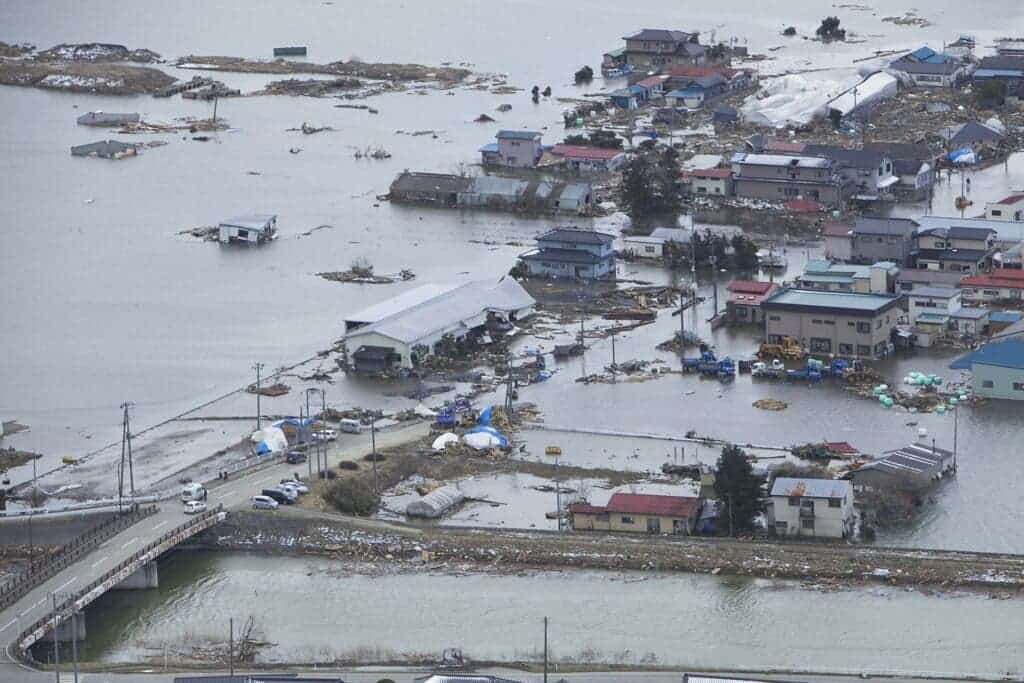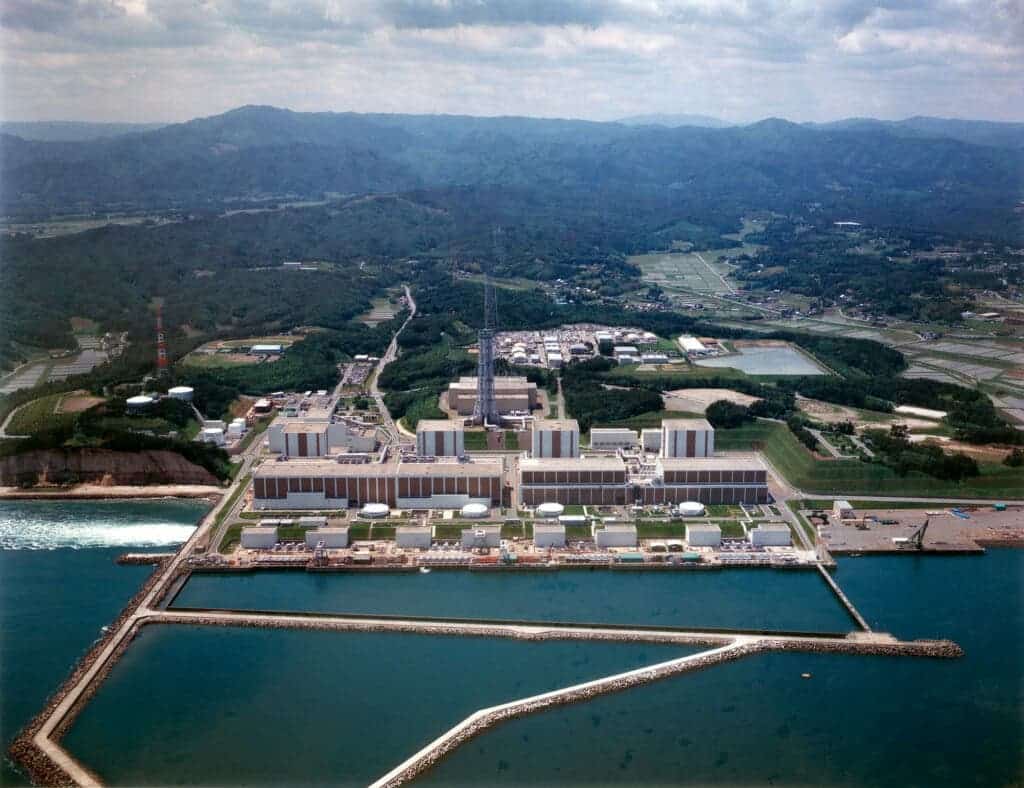Carrying flowers and memories, people walked to the coasts or the cemeteries to pay homage to those lost in the triple disaster that struck the country a decade ago. As Japan honors its 2011 victims, experts are still assessing the long-term effects of the nuclear meltdown, and the shadow of Fukushima still haunts not just Japan, but the entire world.

The triple disaster
A massive 9.1-magnitude earthquake struck the coast of Japan on March 11, 2011. It was one of the strongest earthquakes in recorded history, one of only five to surpass 9 in magnitude. It lasted for approximately six minutes and triggered powerful tsunami waves that reached heights of up to 40 meters (130 feet) and traveled at 700 km/h (435 mph) and up to 10 km (6 mi) inland. Some portions of Japan shifted by as much as 2.4 meters (7 ft 10 in).
It was, simply put, a catastrophe.
In terms of earthquake preparedness, Japan is one of the most (if not the most) well-equipped countries on Earth, and it showed. Many buildings remained standing and suffered minimal damage. Had the country been less prepared, the disaster would have been far greater. But for thousands of people, it was not enough.
Despite Japan’s resilient architecture, the effects of the temblor were severe. The damage from the resulting tsunamis was worse yet. To top it all off, the tsunami caused meltdowns at three reactors in the Fukushima Daiichi Nuclear Power Plant complex, affecting hundreds of thousands of residents.

The waves killed more than 15,000 people in north-eastern Japan. Even more were evacuated, losing their livelihoods and homes. As people were recoiling from the initial shock, Japan faced yet another crisis: the prospect of a Chernobyl-like nuclear meltdown.
It wasn’t another Chernobyl, fortunately, but it was dramatic. In the days following the earthquake, officials from the Japanese Nuclear and Industrial Safety Agency reported radiation levels up to 1,000 times over what was normal. Three reactors at Fukushima had suffered meltdowns and continued to leak coolant water. Officials decided to inject seawater as a substitute coolant, but this proved to cause irreparable damage: unlike freshwater, seawater corrodes pumps and pipelines. Amid gut-wrenching stories of workers and locals rising to the challenge and helping to clean-up, the next few days confirm the meltdown fears.
Milk and water in the area show high levels of radioactive iodine, and chemical explosions at the plant worsen the situation. Radioactive material was leaking into the ocean and the atmosphere, prompting authorities to declare an ever-widening exclusion zone.
Fukushima after a decade
Next to the ruins of the Fukushima nuclear plant, over 1,000 huge metal tanks now lay testament to the disaster. Each tank holds cooling water — 1.25 million tons of it, the equivalent of 500 Olympic-sized swimming pools, and most of the water is still radioactive. But the government is running out of places to build more tanks, and needs to release the water somewhere.
There’s no official decision yet, but Tokyo Electric Power Co. (TEPCO) and the government want to release the water into the ocean, after gradually diluting and decontaminating it — a decision that’s controversial, to say the least.

It’s feasible, the International Atomic Energy Agency says. The decontamination process known as ALPS, is capable of removing almost all radionuclides present in the water, leaving behind only harmless levels. But people don’t really trust TEPCO, and many feel betrayed by the way the company has handled things the past decade.
Fukushima’s fishing community, only now starting to recover after the 2011 disaster, is furious. It’s been a horrible decade for them, with many losing loved ones or forced to abandon their homes. Even as restrictions were lifted, many refused to return and struggled to adapt. Decommissioning the crippled plant will take decades, and TEPCO still doesn’t have a concrete plan for it.
Making a living
Local farmers have been struggling too. They were not allowed to grow crops for two years — and even then, they were well aware that most people would just avoid any crops grown near Fukushima. But the local community was inventive.
Two farmers, Kiyoko Mori and Yoshiko Ogura, decided to grow something else: indigo. Indigo dyeing is traditional in several parts of the world, and this turned out to be a crop that can be used in spite of radiation woes — after all, you don’t eat it, you just dye clothes with it.
The indigo leaves have no level of radiation and years later, business is still working. But most of all, it’s a healing process, the two farmers explain.

But even with such a redeeming story, the prospect of Fukushima’s legacy still looms.
To Mori, it’s a way to rebuild a devastated community and fight the stigma that lurks around Fukushima. She formed a group and teaches indigo dyeing to around 100 people every year, fostering the sense of community. She uses the regular method, with chemical additives.
But for Ogura, indigo dyeing is a different process. She follows a technique that uses traditional fermentation instead of chemical additives, as a way to send a message against the dangers of modern technology.
Fearing nuclear energy
The feeling is still very prevalent in Japan — people are still worried about nuclear energy and would rather see it gone. It’s easy to understand why. It’s not just the disaster itself, but the way things were handled, before and after the disaster.
A 2011 independent investigation in Japan has “revealed a long history of nuclear power companies conspiring with governments to manipulate public opinion in favour of nuclear energy”. One nuclear company “even stacked public meetings with its own employees who posed as ordinary citizens to speak in support of nuclear power plants”.
The thorough, six-month investigation based on 1,167 interviews and 900 hours of hearings confirmed that Japan had the ability to prepare for such an event, but it didn’t. “It was a profoundly man-made disaster — that could and should have been foreseen and prevented,” the report summed up.
Nuclear energy is one of the safest forms of energy out there, but with public trust plummeting, nuclear energy is unlikely to make a resurgence. This effect has spread far beyond Japan, with public trust in nuclear energy dropping all around the world. Even France, a country that derives most of its energy from nuclear plants, support has dropped substantially.
For Japan, a country that vowed to cut carbon emissions to zero by 2050, giving up nuclear power is problematic. In March 2011, the country’s nuclear sector produced 30% of the energy in the country. Now, a mere fraction of that is still in place.
Some of this substitution came from more efficient systems and renewable energy. Fukushima itself was reimagined as a wind and solar hub. But it’s not enough. Despite hefty investments, Japan produces just 10% of its electricity from renewables. It was fossil fuels that replaced much of the gap left behind by nuclear power, and this goes directly against the country’s sustainable pledges. Achieving carbon neutrality without nuclear is just unrealistic, many experts say.
“The prime minister has set the goal of carbon neutrality by 2050 but not everyone understands what that means,” said Masakazu Toyoda, chair of the Institute of Energy Economics in Tokyo and a member of the government’s advisory committee on energy policy. “Even with nuclear it is not easy,” he said. “In my view, without nuclear it is close to impossible.”
Ten years later
In some parts of the Fukushima Prefecture, life has almost returned to normal. In the inland cities, you’d struggle to find any signs of the disaster that took place a mere decade ago. But others still carry the visible and painful scars of one of modernity’s worst disasters.
In the town of Ishinomaki, residents gathered to pray at a cenotaph. In nearby Otsuchi, families wearing dark suits gathered on a piece of empty land where the town hall used to stand — a building the tsunami completely wiped out.
Even when they are not this visible, the scars are still there. Just 3% of Japanese say they want more nuclear energy. The Fukushima site itself remains a dark monument to the tragedy that occurred, a monument that’s unlikely to be decommissioned anytime soon and will cause problems for years to come.
It’s not so much the earthquake itself that is on people’s minds these days, but rather the way things were handled. You can’t really stop an earthquake or a tsunami, but you can stop authorities from being complacent and reckless — and perhaps that is the one lesson worth learning here.


